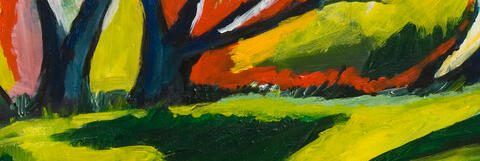Isolating Homosexuals (UK)
After the Night of the Long Knives, the Nazis increased their attacks on gay men. Many Germans applauded the move. Homophobia was not uncommon in German society; homosexuals had long been the target of bigotry and discrimination. In 1871, Germany had enacted a provision in the criminal code, known as Paragraph 175, that made homosexual acts a crime. (Several other nations had similar laws at the time.) That law was still on the books, and many homosexual men were harassed or arrested by police throughout the years of the Weimar Republic. Nevertheless, in Berlin and a few larger German cities, tolerance of homosexuality increased in the 1920s and 1930s, and homosexual culture flourished. Many were able to live their lives openly without hiding their sexual orientation. The Reichstag was even considering abolishing Paragraph 175 before the Nazis came to power.
The Nazis believed that homosexual men were ‘defective’ and an obstacle to the goal of creating a master ‘Aryan’ race. They did not embody, in the Nazis’ view, the masculinity of the ideal German man. The Nazis also feared that if homosexuals held leadership positions in the Nazi Party or government (like Ernst Röhm; see reading, The Night of the Long Knives), they would be vulnerable to manipulation or blackmail by anyone who threatened to expose their sexual orientation. The Nazis were not nearly as concerned about lesbians, who, as women, they presumed would be passive and could be forced to have children.
When Hitler took over in 1933, enforcement of Paragraph 175 was stepped up. A man who lived near Hamburg recalled:
With one blow a wave of arrests of homosexuals began in our town. One of the first to be arrested was my friend, with whom I had had a relationship since I was 23. One day people from the Gestapo came to his house and took him away. It was pointless to inquire where he might be. If anyone did that, they ran the risk of being similarly detained, because he knew them, and therefore they were also suspect. Following his arrest, his home was searched by Gestapo agents. Books were taken away, note- and address books were confiscated, questions were asked among the neighbors … The address books were the worst. All those who figured in them, or had anything to do with him were arrested and summoned by the Gestapo. Me, too. For a whole year I was summoned by the Gestapo and interrogated at least once every fourteen days or three weeks … After four weeks my friend was released from investigative custody. The [Nazis] could not prove anything against him either. However, the effects of his arrest were terrifying. Hair shorn off, totally confused, he was no longer what he was before … We had to be very careful with all contacts. I had to break off all relations with my friend. We passed each other by on the street, because we did not want to put ourselves in danger … We lived like animals in a wild game park, always sensing the hunters.
In June 1935, the Nazis strengthened the law to make it easier to arrest any man presumed to be homosexual.
Connection Questions
- What beliefs and circumstances motivated the Nazis to target homosexual men? How did their attitudes toward homosexual men differ from their attitudes toward lesbians?
- How did the Nazis’ arrests change relationships between partners, friends, and neighbors?
- How did the Nazis use fear to maintain some control over individuals’ decisions?
Facing History and Ourselves

Facing History and Ourselves
Connection Questions
- What beliefs and circumstances motivated the Nazis to target homosexual men? How did their attitudes toward homosexual men differ from their attitudes toward lesbians?
- How did the Nazis’ arrests change relationships between partners, friends, and neighbors?
- How did the Nazis use fear to maintain some control over individuals’ decisions?










